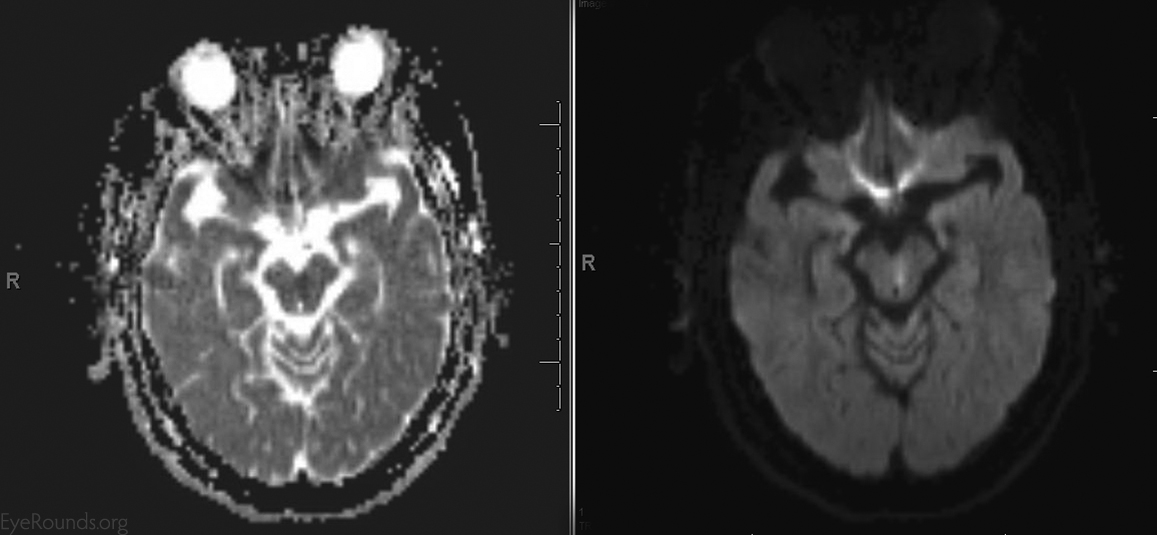
Internuclear ophthalmoplegia (INO) is caused by disruption of the medial longitudinal fasciculus (MLF) which is a nerve fiber bundle that connects the sixth cranial nerve (CN VI) nucleus on one side of the pons to the medial rectus subnucleus of the third cranial nerve (CN III) in the contralateral midbrain. The MLF plays an integral role in conjugate horizontal gaze. A lesion affecting this tract is characterized by an ipsilateral slow adducting saccade, contralateral abducting nystagmus, an ipsilateral adduction deficit that is overcome with convergence and often times a skew deviation. The INO is named for the side of limited adduction. This patient presented with an acute onset of binocular horizontal diplopia that was most noticable in right gaze and difficulty tracking objects as they move to the right. He has vascular risk factors. He had an adduction deficit of the left eye that was overcome with convergence. There was abducting nystagmus of the right eye and a slowed adducting saccade on the left. Imaging showed a small focus of diffusion restriction with corresponding low ADC consistent with an acute infarct in the left inferior medial midbrain just anterior to the cerebral aquaduct that is along the left MLF.


Ophthalmic Atlas Images by EyeRounds.org, The University of Iowa are licensed under a Creative Commons Attribution-NonCommercial-NoDerivs 3.0 Unported License.